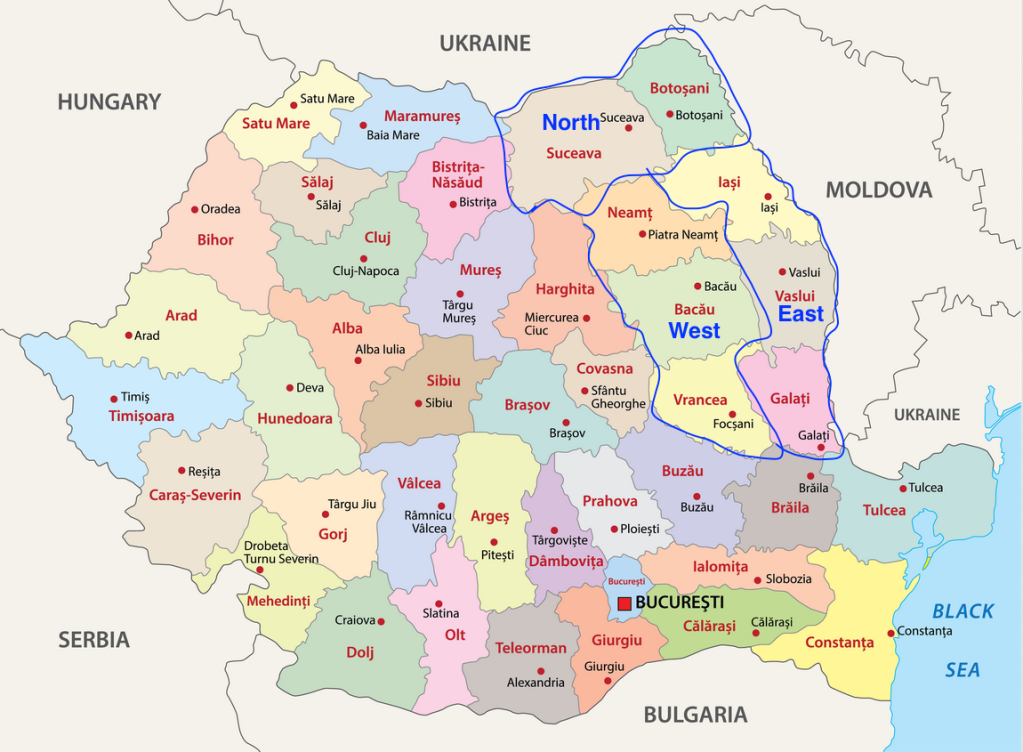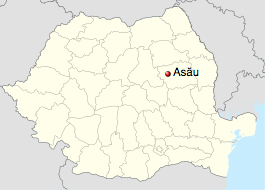*a Living dance is a 1st Generation dance that is still performed in the country of origin (or immigrant communities) as part of a social event like a wedding where others can participate (not for an audience) by people who learned the dance informally (from friends and relatives by observation and imitation, not in a classroom situation). For more information, click here and here.
Corăgheasca (co-rug-YAHS-kah) is a type of Moldavian Brâu, originally a men’s closed or open circle dance, often with a shoulder hold. Corăgheasca is supposedly the eastern, Corăghește the western Moldavian name for the same dance, though YouTube labelers below seem to use the terms interchangeably. The name comes from the local dialect word for ship “coraghie”. Initially it was a sailors dance, later becoming a virtuosity dance. Sailors in the Carpathian foothills, 400 km from the Black Sea? Wikipedia, in an article on the Moldavian military, says: “The Treaty of Adrianople provided for a Moldavian self-defense naval force, to be composed of caicque vessels. Schooners armed with cannons were first built in the 1840s. Along with patrolling the Danube, these made their way on its tributaries, the Siret and the Prut Rivers.” Bacău, the county and capital city, is on the Siret River, which separates eastern from western Moldavia. So these ‘sailors’ may have learned their trade on river gunboats. The dance is accompanied by rhythmic shouts (“strigături”), which may be descendants of sailors’ commands.

MUSIC
There are many melodies named/associated with Corăgheasca/Corăghește. Traditionally, the melodies were in 4 very fast 2/4 measure phrases.
Documents from the old, fretted history of the Romanian people, reveal interesting facts about commercial, military marine activity of the Moldavian Feudal State before Steven the Great (1455). These notes certify the existence of a true navy company with troops specialised in military and commercial ship building. From the etimology of the word ,,ship” and from the historical notes, we can make the connections to one of the oldest Moldavian dances Coragheasca, a virtuosity dance especially for men. This dance was accompanied by “strigături”, yelled commands while making some certain synchronized movements which may send us to the analogy of the sailors’ commands. The function of the dance is apothropaic and cathartic but we suppose that it has a ritual component, because there is a similarity to the famous “Căluşari” (a certain movement – turning around counter clockwise).” https://www.youtube.com/watch?v=vToHtJ7dW_I
Many of the music YouTubes below are quite recent, indicating Corăgheasca is still alive among Moldavians. Modern music videos feature a ‘star’ singer, with a performing group glimpsed in the background doing what appears to be Corăgheasca/Corăghește footwork.


DANCE
Anca Giurchescu, in her book “Romanian Traditional Dance”, 1992, says of western Moldavia (Neamț & Bacău counties) “the Brâu type called Corăghește [is among the] most important to the local repertoire”. In eastern Moldavia, she says “Among the group dance types….Corăgheasca [is among] the most frequent”. She also lists a variety of possible steps, including “steps (front + back cross, stamping (F) on the heel); stamps; hops; heel clicks; deep flexions….unidirectional CCW…Tempo-fast…” Dick Crum in his 1987 Stockton notes writes “Dances bearing this name differ widely in their steps and music”
The few YouTubes of wedding bands playing Corăgheasca show celebrants doing a basic Hora mare – T-4.
I couldn’t find an example of a performing group doing a Coragheăsca – to me that’s a sign the dance is still living – not fit for a ‘heritage’ display.
I did come across a series of 6 YouTubes, all from the town of Berzunți, that show some people who seem to know the dance from the inside, so it’s still alive, at least in Berzunți. Of the ‘2, 3, 4, 5’ series #5 has the best view of the feet.

DANCE NOTES
In 1979, Eugenia Popescu-Judetz published “Sixty Folk Dances of Romania” in which she delineated Corăgheasca de la Colonești. The notes below were prepared for Stockton, 1971, but were not taught.


In 1987, Dick Crum taught this at Stockton.



Corăgheasca must not have caught on among recreational groups as I’ve found no YouTubes of recreational groups doing even a simplified version of it.
